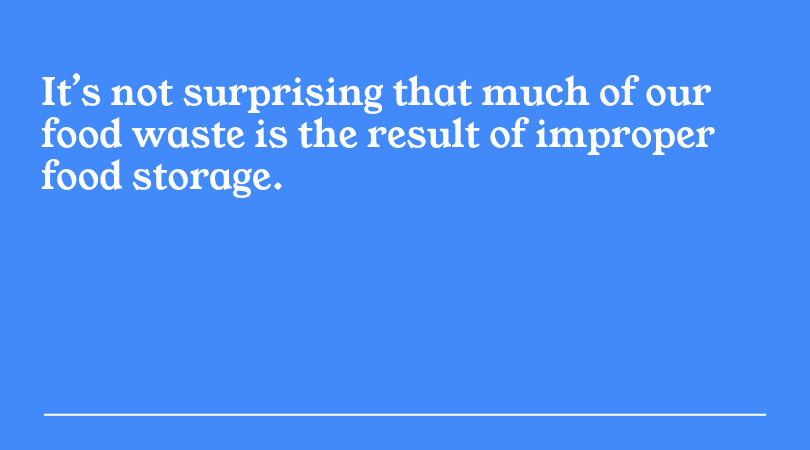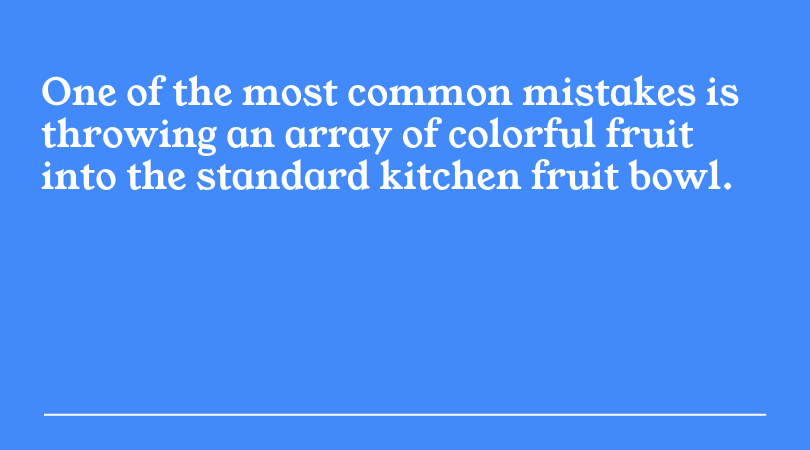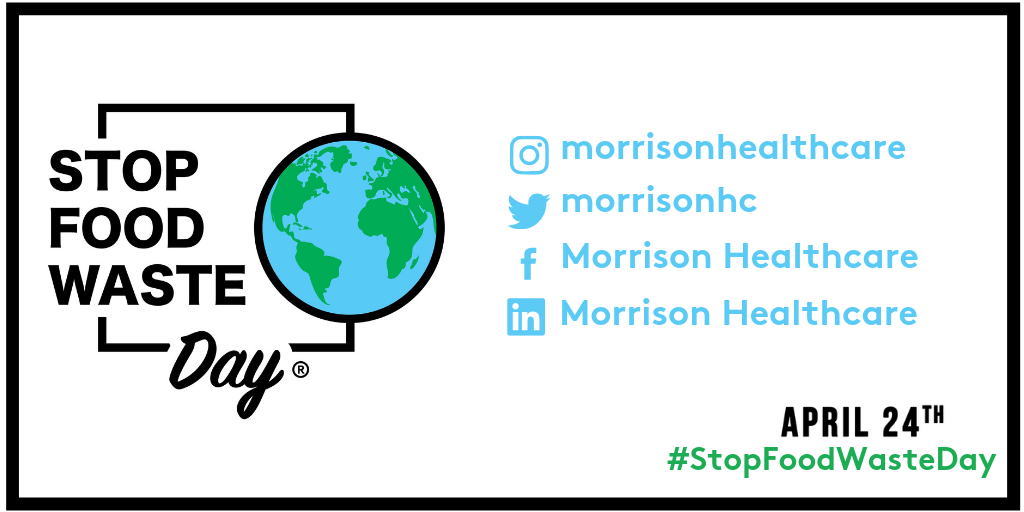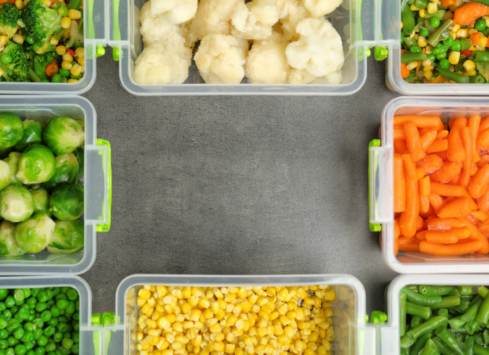Storage Tips to Stop Food Waste
By Justin Newgaard, Corporate Executive Chef
It’s not surprising that much of our food waste is the result of improper food storage. After a meal, most of us have food left over, place it in a container or a plastic bag and stash it in the refrigerator. Unfortunately, days or weeks later, that’s where we see it again.
There are other, simple mistakes about food storage that can easily be corrected. So, here are a few quick tips to help you store food properly and cut down on waste.

Store Produce in the Right Places. Not all produce needs to be stored in the refrigerator. In fact, many types of product should be stored at room temperature. Most people are aware that potatoes, bananas, garlic and onions should be stored outside of the refrigerator. But did you also know the following fruits and vegetables should be stored at room temperature? They are tomatoes, melons, nectarines, pears, peaches.
Probably the biggest surprise here for most people is tomatoes. Many people that grow tomatoes will set them on their window sill to ripen, but for some reason toss them into the refrigerator if bought from the store. Always keep them on the counter; storing them in the refrigerator make them soft and mushy.
Use the Crisper Drawer Wisely. Many home refrigerators have a crisper drawer that controls humidity. Make sure the crisper is on a moist setting; dampness prevents produce from drying out. Place fruits and vegetables such as asparagus, broccoli, cauliflower, citrus, cucumbers, eggplant, green beans, greens (like chard and spinach), lettuces, parsley, peppers, raspberries, squash, strawberries and sweet potatoes.
Watch That Fruit Bowl. Next, there are certain foods that shouldn’t be stored next to each other. One of the most common mistakes is throwing an array of colorful fruit into the standard kitchen fruit bowl. It may look pretty, but each fruit will ripen at different times. If someone is storing a lot of different fruit in the bowl, there’s a good chance something will go wrong.

For example, an avocado will quickly begin to rot if placed next to bananas. That’s because bananas produce ethylene, a natural plant hormone that sets off the ripening process. And, amazingly, any other fruits that are stored in close proximity to apples will ripen more quickly!
On the other hand, other fruits that are stored in close proximity to apples will ripen more quickly.
Put Stale Bread to Good Use. I’m one of those odd souls that not only eats the heels from a loaf of bread but will use both heels to make a sandwich. For those people that don’t eat bread heels, don’t throw them out. Dry them, or wait until they get a little stale and make bread crumbs. Simply run them along a grater to create tasty bread crumbs.
Safety Tips Will Keep Food Fresh. We don’t want bacteria to spread once food is in the refrigerator, so properly place food in the refrigerator to ensure everything in there is safe. Place anything that can be eaten raw on the top shelf – vegetables and condiments, including pickles and mayo.
Raw meat, poultry and fish each have a different kind of bacteria and should be stored in the following top-to-bottom order in the refrigerator: whole fish, whole cuts of beef and pork, ground meats and fish, and whole and ground poultry. Chicken should never be placed on the top shelf since it could drip on other items below. Wrap food properly before storing it.
| Food Item | Best way to store this food? |
| Bananas | By themselves on counter, not in sunlight. Plastic wrap around stems, slows curing process. Puts a slow on it. |
| Avocados | With other produce but not bananas. Can put in Refrigerator. |
| Poultry | Store the smallest amount possible. For example, if you buy a four-pack of chicken and use one piece, place the rest in freezer bags. Store poultry on bottom shelf. |
| Pre-Cooked Food (leftovers) | Place in a vacuum-sealed bag, date and freeze for future use. Place in the refrigerator that you plan to eat in the next couple of days, but throw out if not eaten in 4-5 days. |
| Berries | Store in refrigerator. Shelf life is short, especially if not in season. But you can keep an extra few days if in season. Wash berries when you are ready to eat them. |
| Lettuce or Leafy Greens | Spinach and romaine lettuce have multiple uses. Wash a head of romaine lettuce just before use. Once all leaves are used, place the crown back in water and it will regrow. It can be replanted and in three weeks there will be a new head of lettuce. |
| Apples | Store at room temperature. Because we are eating the skin, always wash apples; they may have traveled a thousand miles to get to your home. |
| Sliced Bread | Use whole loaf, including heels. Don’t store in sunlight, but rather in a bread box or cabinets. And bread can be frozen. |
| Potatoes | Keep in a cool, dark place by themselves, but not in the refrigerator. |
| Tomatoes | Tomatoes travel well; can be stored in or out of a refrigerator. Wash thoroughly before eating. |
| Peaches | Buy the amount needed and store outside of the refrigerator, If bought out of season, it will take time to ripen. |
| Asparagus | Refrigerate in the crisper drawer. Most people eat the top two-thirds and throw out the bottom root. But it can be frozen and used for vegetable stock and for cream of asparagus soup. |
Stop Food Waste Day is Coming!
- Stop Food Waste Day is about educating and igniting change. Food waste is a global issue with a wide variety of impacts. As a Compass Group family, we’re uniting to raise awareness and make small but significant changes in how we care for our food.
- Take the Stop Food Waste Day Pledge today!
- Follow along on our social media platforms so you don’t miss anything!





